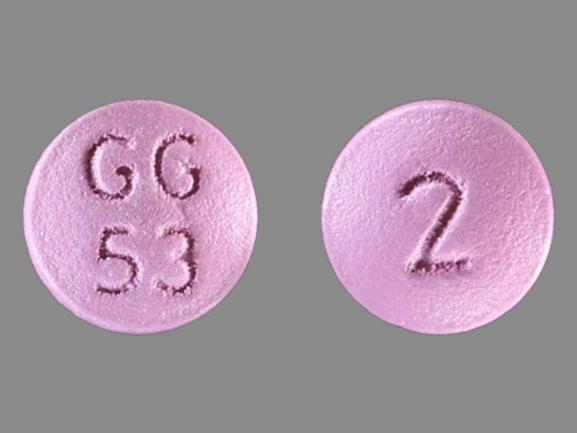Trifluoperazine Side Effects
Medically reviewed by Drugs.com. Last updated on Nov 6, 2023.
Applies to trifluoperazine: oral tablets.
Important warnings
This medicine can cause some serious health issues
-
Increased Mortality in Geriatric Patients with Dementia-related Psychosis
- Geriatric patients with dementia-related psychosis treated with antipsychotic agents are at an increased risk of death.a e l m o
- Analyses of 17 placebo-controlled trials in geriatric patients mainly receiving atypical antipsychotic agents revealed an approximate 1.6- to 1.7-fold increase in mortality compared with that in patients receiving placebo.a l m
- Most fatalities appeared to result from cardiovascular-related events (e.g., heart failure, sudden death) or infections (mostly pneumonia).a m
- Observational studies suggest that conventional or first-generation antipsychotic agents also may increase mortality in such patients.a e l
- Antipsychotic agents, including trifluoperazine, are not approved for the treatment of dementia-related psychosis.a l m
Side effects include:
Extrapyramidal reactions (e.g., Parkinson-like symptoms, dystonia, akathisia), drowsiness, fatigue, muscular weakness, insomnia, blurred vision, skin reactions or rash, anorexia, dry mouth, hypotension, amenorrhea, galactorrhea.
For healthcare professionals
Applies to trifluoperazine: compounding powder, intramuscular solution, oral concentrate, oral tablet.
Nervous system
- Frequency not reported: Drowsiness, dizziness, tremulousness, extrapyramidal symptoms, parkinsonism, acute dystonia/dyskinesia, facial grimacing, opisthotonos, hyperreflexia, tardive dyskinesia/tardive dyskinesia of the facial muscles, involuntary movement of the extremities, neuroleptic malignant syndrome, altered consciousness, autonomic instability, grand/petite mal convulsions, altered cerebrospinal fluid proteins, cerebral edema, headache, akathisia (with motor restlessness and difficulty sitting still)[Ref]
Extrapyramidal symptoms were more common in doses of over 6 mg/day. Symptoms included parkinsonism, torticollis, facial grimacing, trismus, tongue protrusion, abnormal eye movements, akathisia with motor restlessness and difficulty sitting still.
Acute dystonia/dyskinesia typically occurred early in treatment and was likely to be severe in children; this side effect included torticollis, facial grimacing, trismus, tongue protrusion, and abnormal eye movements.
Neuroleptic malignant syndrome was characterized by hyperpyrexia, muscle rigidity, altered consciousness and autonomic instability.
Grand/petite mal convulsions occurred in patients with/a history of EEG abnormalities.[Ref]
Cardiovascular
- Frequency not reported: Mild postural hypotension/hypotension, edema/peripheral edema, tachycardia, ECG changes, QT prolongation, T-wave changes, ventricular arrhythmias/fibrillation/tachycardia, atrioventricular block, paroxysmal tachycardia, serious arrhythmias, cardiac arrest, Torsade de pointes, venous thromboembolism, deep vein thrombosis, severe hypotension/fatal hypotension[Ref]
Severe hypotension occurred in patients with specific medical problems (e.g., mitral insufficiency, pheochromocytoma).
ECG changes, including QT prolongation and T-wave distortions, were typically reversible and occurred in patients taking phenothiazine antipsychotics.[Ref]
Dermatologic
- Frequency not reported: Skin reactions/disorders, photosensitivity reactions, skin pigmentation, epithelial keratopathy, itching/pruritus, erythema, urticaria, angioneurotic edema, erythema multiforme, contact dermatitis, eczema (up to exfoliative dermatitis)[Ref]
Skin pigmentation and epithelial keratopathy occurred in patients receiving substantial doses for a prolonged duration.
Contact dermatitis occurred in patients who handled phenothiazines.[Ref]
Psychiatric
- Frequency not reported: Transient restlessness, stimulation, insomnia, confusion/toxic confusional states, feelings dulled, agitation, increased aggressiveness, withdrawal reactions, reactivation of the psychotic processes, catatonic-like states[Ref]
Dulled feelings and/or agitation have occurred at low doses, especially in non-psychotic patients.[Ref]
Other
- Frequency not reported: Lassitude, fatigue, hyperpyrexia, sudden, unexplained death, signs of persistent infection, neonatal drug withdrawal syndrome, autonomic reactions, reversed epinephrine effect, intensification/prolongation of the action of atropine/heat/organophosphorous insecticides/central nervous system depressants (e.g., opiates, analgesics, antihistamines, barbiturates, alcohol)[Ref]
Sudden death from cardiac arrest or asphyxia (cough reflex failure) has been reported in patients receiving phenothiazines.[Ref]
Hematologic
- Frequency not reported: Blood dyscrasias, agranulocytosis, pancytopenia, leukopenia, thrombocytopenia, thrombocytopenic purpura, eosinophilia, hemolytic anemia, aplastic anemia[Ref]
Ocular
- Frequency not reported: Blurred vision, abnormal eye movements, oculogyric crisis, lenticular opacities, pigmentary retinopathy, lacrimation, keratoconjunctivitis, miosis and mydriasis, lenticular and corneal deposits[Ref]
Lenticular and corneal deposits occurred in patients receiving substantial doses for a prolonged duration.[Ref]
Gastrointestinal
- Frequency not reported: Dry mouth, constipation, tongue protrusion, nausea, vomiting, obstipation, ileus/adynamic ileus, atonic colon[Ref]
Genitourinary
- Frequency not reported: Urinary hesitancy/retention, lactation, galactorrhea, menstrual irregularities, false-positive pregnancy tests, amenorrhea, ejaculation disorders/impotence, priapism[Ref]
Musculoskeletal
- Frequency not reported: Muscular weakness, torticollis, trismus, muscle rigidity, systemic lupus erythematosus-like syndrome[Ref]
Metabolic
- Frequency not reported: Anorexia, weight gain/change, hyperglycemia, hypoglycemia, increased appetite[Ref]
Respiratory
- Frequency not reported: Pulmonary embolism, nasal congestion, asthma, bronchospasm, laryngeal edema[Ref]
Hepatic
- Frequency not reported: Mild cholestatic jaundice, liver damage, jaundice, biliary stasis[Ref]
Endocrine
- Frequency not reported: Gynecomastia, hyperprolactinemia/elevated prolactin levels, endocrine disturbances[Ref]
Hyperprolactinemia occurred in patients given higher doses, and was associated with the development of galactorrhea, amenorrhea, and/or gynecomastia.[Ref]
Hypersensitivity
- Frequency not reported: Other allergic reactions, anaphylaxis/anaphylactoid reactions[Ref]
Oncologic
- Frequency not reported: Hormone-dependent breast neoplasms[Ref]
Renal
- Frequency not reported: Glycosuria[Ref]
References
1. (2001) "Product Information. Stelazine (trifluoperazine)." SmithKline Beecham
2. Cerner Multum, Inc. "UK Summary of Product Characteristics."
3. Cerner Multum, Inc. "Australian Product Information."
More about trifluoperazine
- Check interactions
- Compare alternatives
- Pricing & coupons
- Reviews (23)
- Drug images
- Dosage information
- During pregnancy
- Drug class: phenothiazine antipsychotics
- Breastfeeding
- En español
Patient resources
Professional resources
Related treatment guides
Further information
Trifluoperazine side effects can vary depending on the individual. Always consult your healthcare provider to ensure the information displayed on this page applies to your personal circumstances.
Some side effects may not be reported. You may report them to the FDA.

